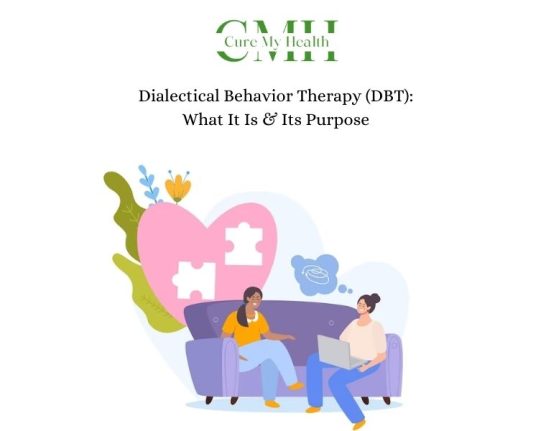Due to its unique methods and effective outcomes, acceptance and commitment therapy (ACT), a therapeutic approach, is becoming more and more well-known in the field of mental health and welfare.
If you’ve heard of ACT but are unaware of what it entails, you’ve come to the correct place. Let’s go in-depth and discover more about the ACT in therapy sessions.
What is Acceptance and Commitment Therapy (ACT)?
Consider ACT as a casual discussion with a therapist who wants to help you accept life’s problems while still advancing in ways that are consistent with your ideals. This therapy focuses on altering your relationship with bad feelings rather than trying to eliminate them.

The ACT Process
Imagine being in a therapy session where you’re not urged to push away your thoughts or suppress your feelings.
Instead, you’re encouraged to acknowledge those thoughts and feelings without any judgment. This is the acceptance part of ACT. It’s about making space for your emotions, even the uncomfortable ones, without letting them dictate your actions.
But that’s not all—there’s the commitment part of ACT. Identifying your personal priorities is important for this. What kind of life do you want to lead? What values are important to you? Once you’ve got a clear picture of that, you start taking small, purposeful steps toward those values. It’s like creating a roadmap to the life you want, even if there are bumps along the way.

Why ACT Works
Therapists who use ACT don’t promise to magically erase your problems. Instead, they equip you with skills to handle challenges more effectively. It’s like receiving a toolkit for your mind. ACT doesn’t aim to eliminate pain or distress; rather, it helps you build a healthier relationship with those experiences.
Consider this analogy: Life consists of good and not-so-good moments. ACT teaches you to surf through these moments rather than getting stuck in them. It’s about learning to be flexible with your thoughts and feelings so they don’t trap you in a cycle of suffering.
Therapist Aid in ACT
Therapists often employ various tools and exercises to help you grasp the concepts of ACT and apply them to your life. These tools are like practical guides that make the therapy process more tangible and actionable.
For example, you might explore mindfulness exercises that help you stay present and aware of your thoughts without becoming entangled in them. There could be visualization techniques to help you better understand your values and goals. Journaling might also be incorporated into your therapy sessions, allowing you to track your progress and reflect on your journey.
Remember, therapists are akin to skilled coaches who guide you through these exercises. They’re not here to judge you but to support and empower you on your path to well-being.

ACT in Therapy Sessions
Now, let’s delve into what typically transpires during an ACT therapy session. It’s usually a one-on-one conversation between you and a therapist. Picture yourself in a comfortable room, perhaps sipping tea or water, engaging in an open dialogue. The therapist listens attentively, asks questions, and gently guides you through the ACT process.
At times, you might even engage in role-playing specific scenarios to practice acceptance and commitment in a safe environment. These sessions are collaborative; your input and insights are highly valued. There’s no rush, no pressure—just a dedicated space for you to explore your thoughts, emotions, and aspirations.
Overcoming Obstacles with ACT
One of the remarkable aspects of Acceptance and Commitment Therapy (ACT) is its approach to dealing with obstacles. In traditional therapy, the focus often shifts towards removing or eradicating the problems that individuals face.
However, ACT adopts a different stance. It acknowledges that challenges are an inevitable part of life and that attempting to get rid of them entirely can be counterproductive.
Consider someone who experiences social anxiety. In traditional therapy, the goal might be to eliminate the anxiety altogether. In ACT, the focus shifts towards understanding that anxiety might never completely vanish.
Instead of striving for its eradication, ACT encourages the individual to accept anxiety as a part of their experience. This acceptance reduces the struggle with the anxiety itself and allows them to concentrate on engaging in activities that align with their values.
The Role of Values in ACT
Values play a significant role in Acceptance and Commitment Therapy. They serve as guiding stars that help individuals make decisions and set goals that are meaningful to them.
Clarifying one’s values is like setting a compass direction for life. It provides a sense of purpose and direction, which can be particularly helpful when facing difficult choices.
ACT encourages individuals to identify their core values—what truly matters to them on a deep level. It could be relationships, personal growth, creativity, or contributing to the community.
By aligning actions with these values, individuals find themselves living more authentic and fulfilling lives, even in the presence of challenges.
Imagine someone who values physical health and vitality. They might be struggling with chronic pain due to a medical condition.
In traditional therapy, the focus might be solely on reducing the pain. However, in ACT, the person is encouraged to accept the pain as part of their reality and then take actions that align with their value of physical health.
This might involve finding gentle exercises that they can still engage in or modifying their routine to accommodate their condition.

Conclusion
Therefore, ACT might be the best option for you if you want to improve your psychological flexibility, and increase your resilience. And, lead a more fulfilling life.
Remember that therapy is a collaborative process, and with the help of a qualified therapist. You may learn to accept life’s highs and lows while moving closer to the life you actually want.














